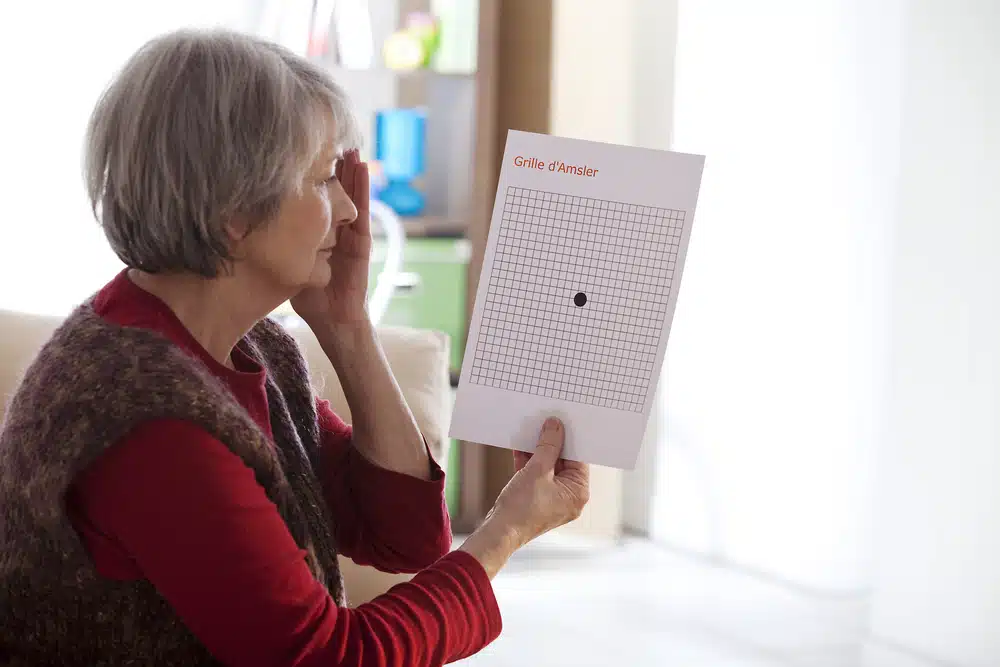Age-related macular degeneration, also known as AMD, is a common vision loss condition that often occurs in those aged 50 and older. The macula, which is a small area near the centre of the retina, becomes damaged causing moderate to severe vision problems. You may experience blurred areas, blank spots, and dullness in your centre field of vision. This can make simple everyday activities more challenging to perform. There are preventative measures and treatment options to help reduce the symptoms. So, if you are someone you love is experiencing what you believe to be AMD, read further as we provide you with all the information you need in this brief guide.
Contents
What is Your Macula?
Your macula is the most sensitive part of your eye’s retina. The macula helps to provide sharp and central focused vision. When it becomes damaged the centre of your field of view becomes affected, and you will experience blurry, dull, and distorted vision.
Who is at Risk?
Those with a family history of AMD are at higher risk. Smokers and those with poor nutrition are also more likely to develop the condition. It occurs more commonly in those over 50, but it also has been found to occur in those earlier in age.
Are There Symptoms?
The early and intermediate stages often begin without any signs of symptoms. However, a comprehensive eye exam can detect the signs. Your eye professional will check your retina and look for changes that are associated with macular degeneration.
What Can I Expect if Diagnosed?
Those with early and intermediate AMD may not notice any symptoms. In the later stages of AMD, many people have reported having noticeable vision loss. But not everyone with early AMD will develop into late AMD – there is between a five and fourteen percent chance of developing late AMD. Those with AMD in only one eye may not notice any changes in their overall vision, but there is an increase in the probability of obtaining AMD in your other eye. So, it’s important to have your eyes examined regularly if you’re at risk for AMD.
Are There Treatment Options?
As of current, there are no treatment options for early AMD. However, if you’re at risk, you can improve your exercise, intake of vegetables and fish, and avoid smoking to decrease your chances. For intermediate stages and those with late-stage AMD in one eye, your doctor may recommend vitamin supplements to help further reduce the risk of late-stage AMD. For those with advanced AMD, your eye care professional may recommend therapy. These therapies include drug injections, retina laser treatments, or laser surgeries to help slow the rate of vision loss.
Are There Any Coping Methods?
Help is available for those living with AMD. Your eye care professional can put you in touch with a support team of other specialists and counsellors who can help you make the most of your vision impairment. There are also adaptive devices like computer aids, video magnifiers, and high-powered lenses; you can purchase to help you with the loss of visions and to make your daily life easier.
AMD can be a scary diagnosis at first, but there are potential treatments and devices that can help you live your life without feeling isolated from others. If you or someone you know is at risk of AMD, ensure to see your professional eye doctor for a comprehensive exam. Catching AMD early can make a difference.
